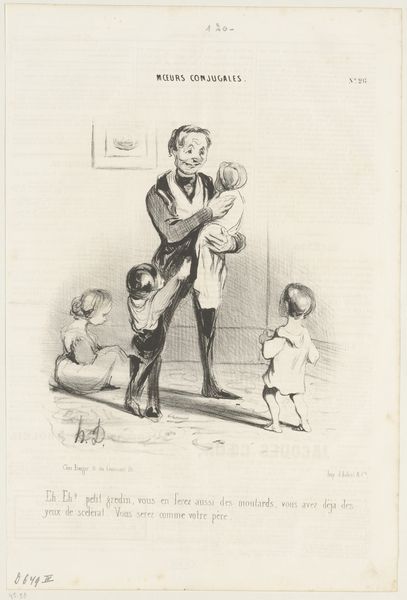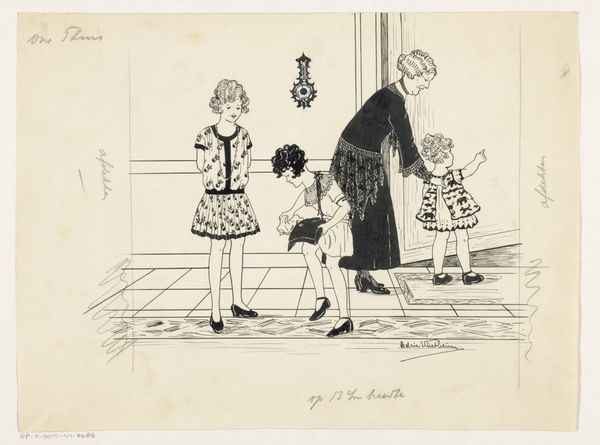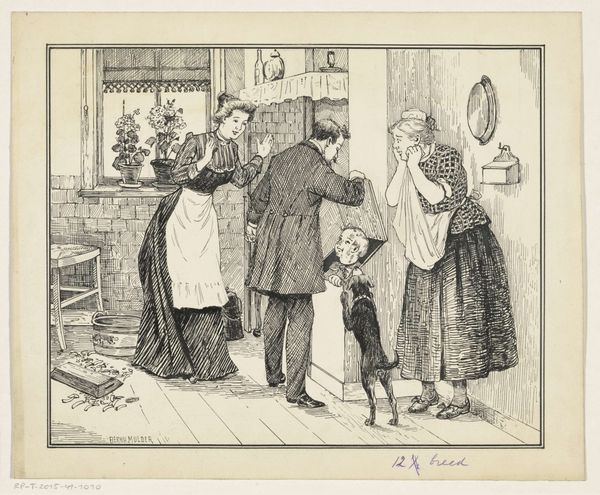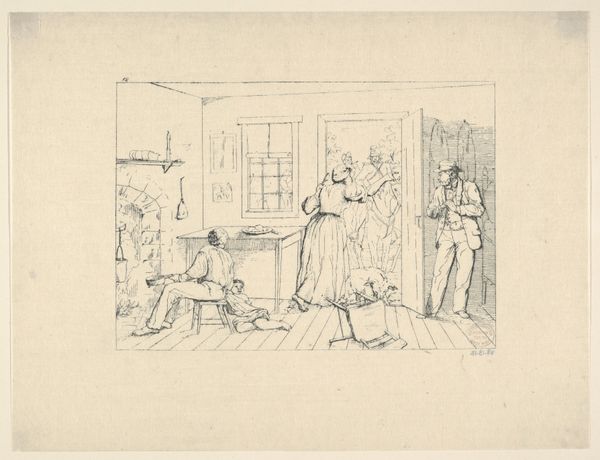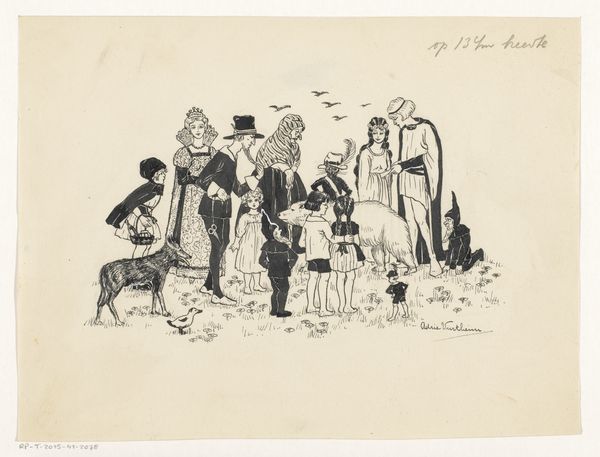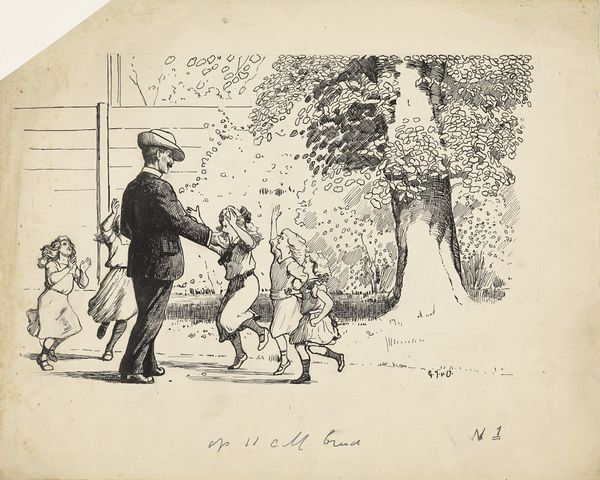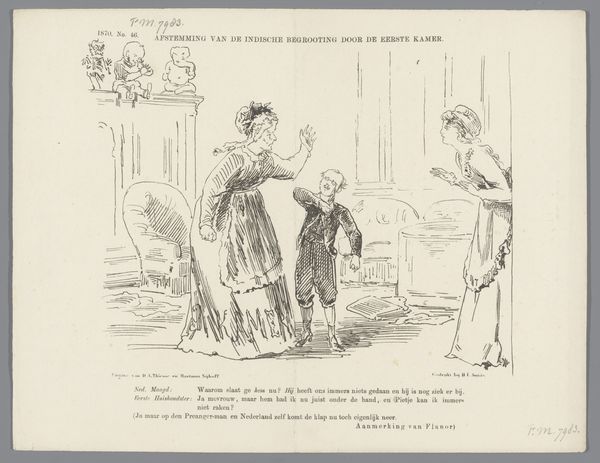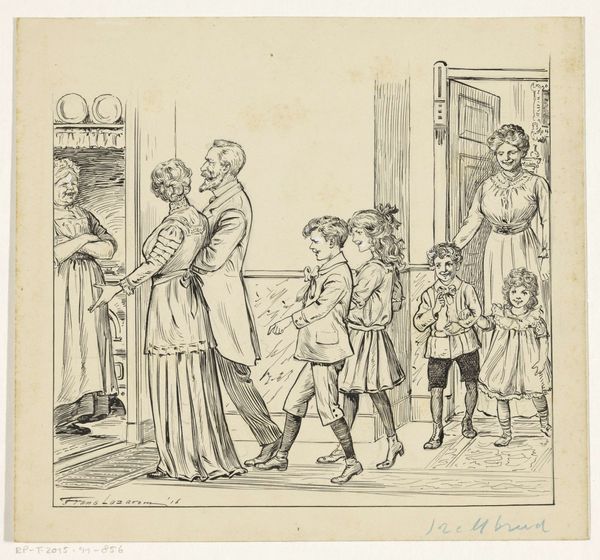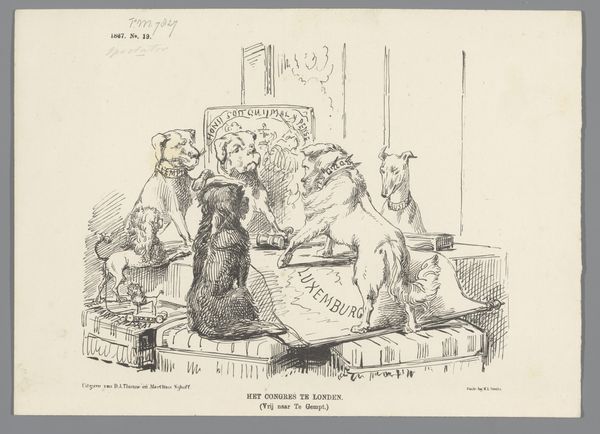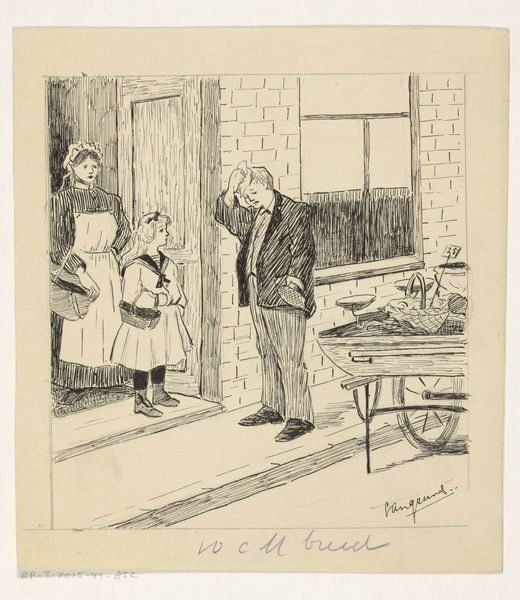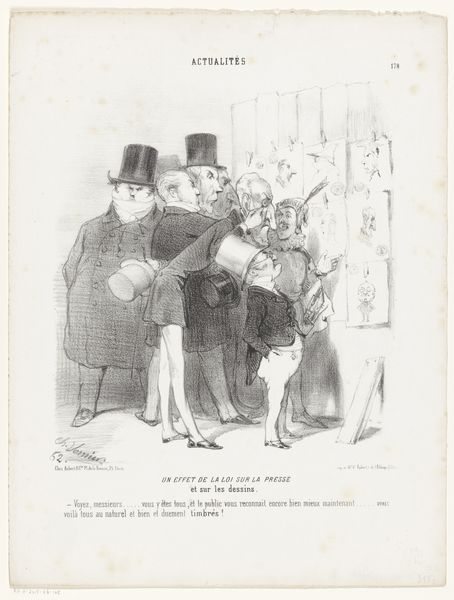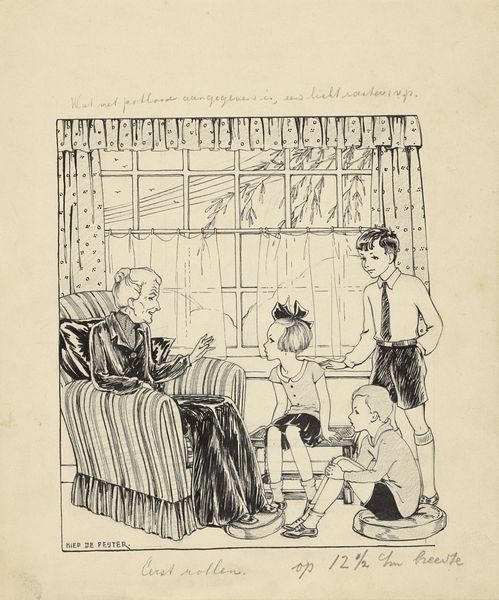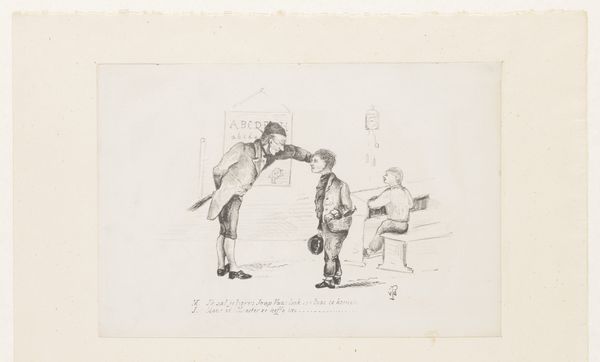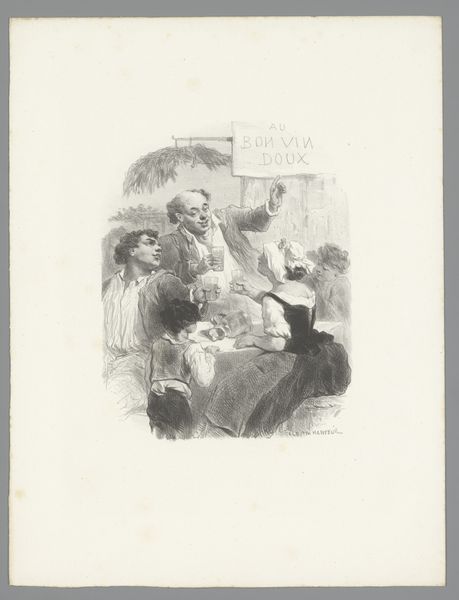
drawing, ink, pen
#
portrait
#
drawing
#
narrative-art
#
dog
#
figuration
#
ink
#
pen-ink sketch
#
pen
#
genre-painting
Dimensions: height 157 mm, width 202 mm
Copyright: Rijks Museum: Open Domain
Editor: So, this ink drawing is called "Man wijst een jongen terecht" or "Man Reprimanding a Boy" by D. Viel, likely created between 1915 and 1935. There's a really interesting, almost nostalgic, feel to it. The composition seems very staged, like a family portrait with some drama injected. What draws your eye when you look at this piece? Curator: Immediately, I consider the materials. Ink, pen, paper – readily available and relatively inexpensive, suggesting a work made accessible to a wider audience. Notice the stark contrast, the lines sharply defining the social dynamics at play. A family scene, but also a snapshot of labor and expectation. The labor that goes into creating this drawing. Also, the kind of labor that will shape the life of this reprimanded boy. Editor: I see what you mean. The medium reinforces the narrative – there’s no room for softness with these sharp lines, is there? How does the material choice connect with the socio-economic context? Curator: Exactly. The artist chose this specific medium, pen and ink drawing on paper, because it mirrors its period's conditions for production. A choice suggesting mass production rather than bespoke individual work. It reminds us that this work is born of everyday lives, rendered with ordinary and available means. This economy of production extends to its themes of discipline and social expectations. We witness not just a family scene, but also the molding of a future worker within a strict social fabric. Do you agree with this assessment? Editor: That’s insightful! I was focused on the figures, but you’ve brought me to see how the artwork itself is a product of its time. I'm seeing so many more possible connections now. I hadn’t really considered it in those terms before. Curator: Precisely. Seeing art as a product unveils layers beyond just aesthetics, urging us to ask: how was it made, why these materials, and whom does it represent beyond the surface? The very act of the pen touching the paper in certain social environments bears complex messages that can inform the understanding of culture, and, more specifically, that of the artwork itself. Editor: So, by examining the 'how' and 'why' of its creation, we learn so much more about its cultural and historical significance. Fascinating. Curator: Absolutely. Considering materiality broadens our understanding.
Comments
No comments
Be the first to comment and join the conversation on the ultimate creative platform.
